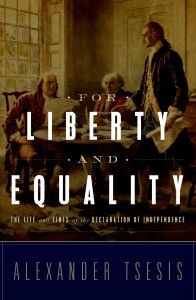It is interesting to reflect on the drama that surrounded the decision to assert national sovereignty. On June 7, 1776, Richard Henry Lee proffered the initial resolution for independence to the Continental Congress. No immediate consensus emerged on its passage.
Debate on Lee’s resolution only began in earnest on July 1, with some members of congress still hoping to reconcile with the monarchy. A clear split occurred: New Hampshire, Connecticut, Massachusetts, Rhode Island, New Jersey, Maryland, Virginia, North Carolina, and Georgia voted for independence. South Carolina and Pennsylvania cast votes against it, Delaware’s two delegates were divided, and the New York delegates declared they were ready to vote for the resolution but believed their instructions forbade them from doing so.
The next day, a momentous change took place. An additional delegate for Delaware, Caesar Rodney, who had been riding on horseback all night in the rain, arrived to break the tie, voting for independence. In his diary, future president John Adams describes Rodney as “the oddest-looking man in the world; he is tall, thin, and slender as a reed, pale; his face not bigger than a large apple, yet there is a sense of fire, spirit, wit, and humor in his countenance.” This unusual looking fellow is reputed to have ridden a remarkable eighty miles, changing horses along the way, entering Independence Hall in his boots and spurs, still dusty, shortly before the doors of Congress had been shut at the opening of the day’s session. Members of the South Carolina delegation had come to a consensus to vote for Lee’s motion. Pennsylvania had nine members who were seated in 1775, but only seven of them were present in the hall on July 2. Two of them were no longer active in Congress. One of those two, Andrew Allen, had left in June and would become a British Loyalist. The other was on his deathbed. The “yea” vote for Pennsylvania was cast by only three of the delegates who were present, with two others voting against it. John Dickinson and Robert Morris were in the hall but abstained from voting, allowing the affirmative vote to stand. That left New York’s delegation. But it did not vote either way, only adding its support several days later. Congress had now resolved,
That these United Colonies are, and, of right, ought to be, Free and Independent States; that they are absolved from all allegiance to the British crown, and that all political connexion between them, and the state of Great Britain, is, and ought to be, totally dissolved.
That was the actual declaration of independence, which was adopted on July 2. The document that has come to be known by that name, the Declaration of Independence, was an explanation of congress’s decision to absolve its allegiance to England and the nation’s principles.
Alexander Tsesis teaches at Loyola University, School of Law-Chicago. He is author of For Liberty and Equality: The Life and Times of the Declaration of Independence (Oxford University Press).

